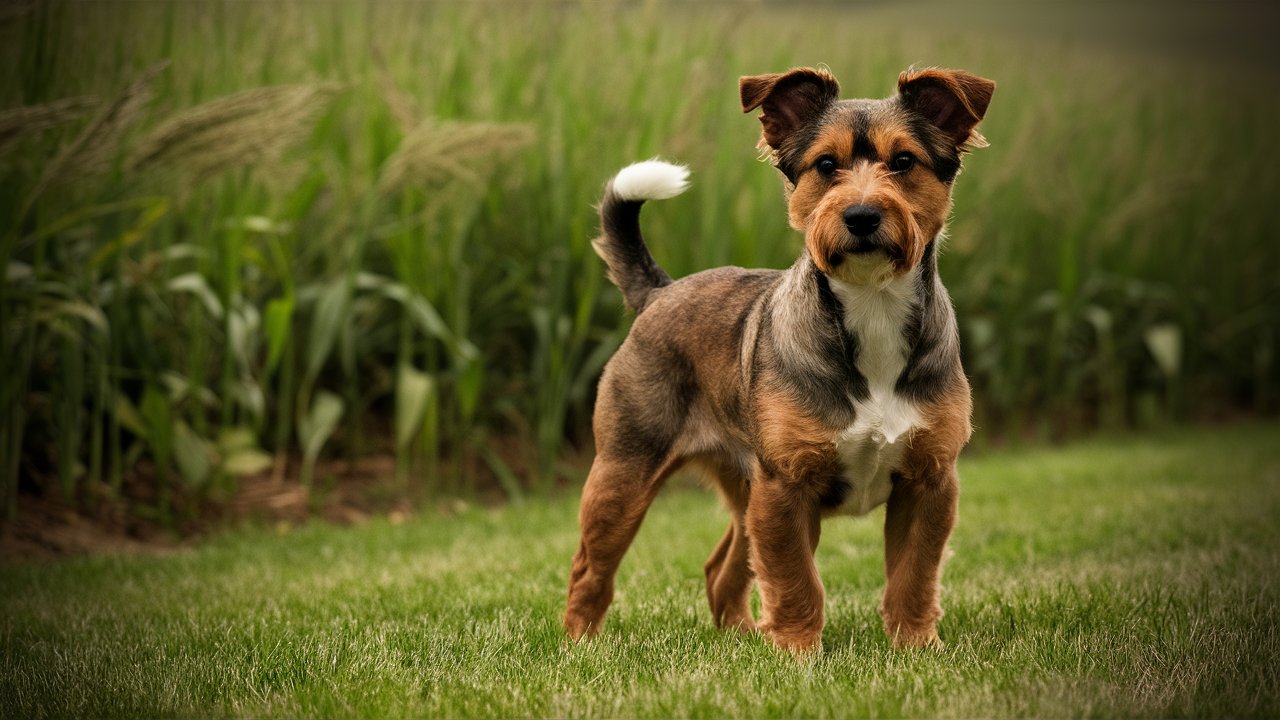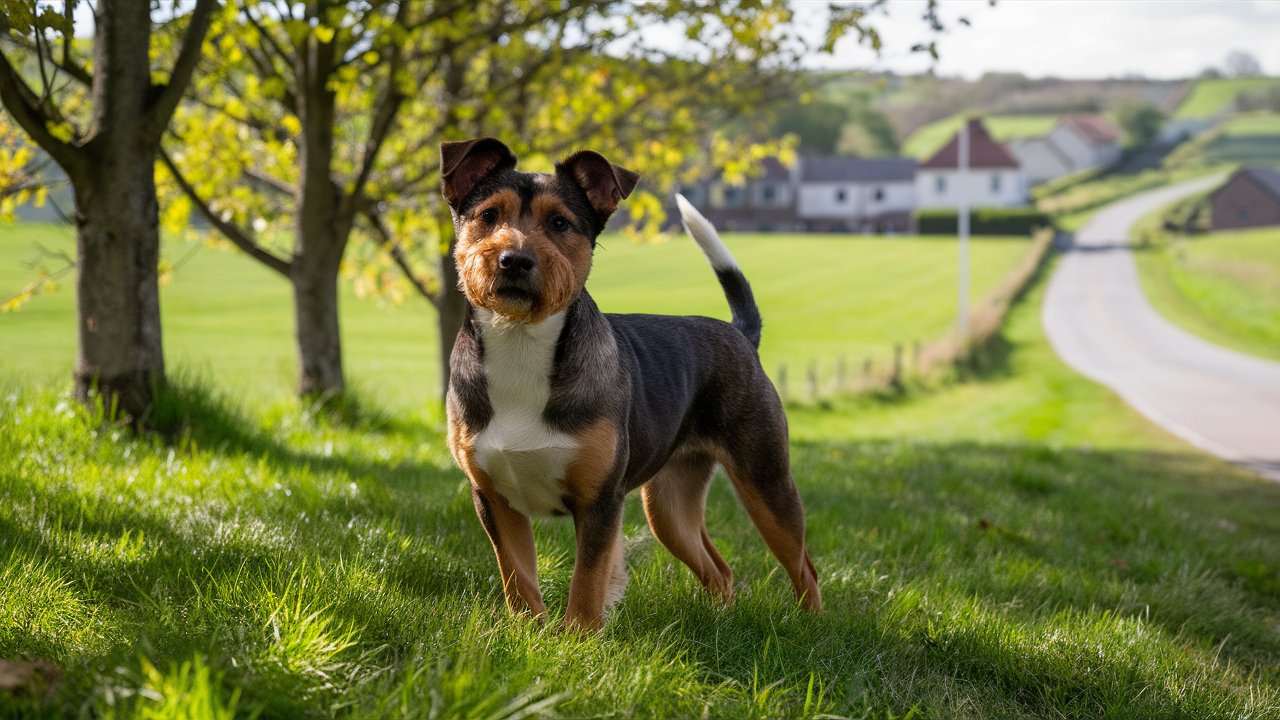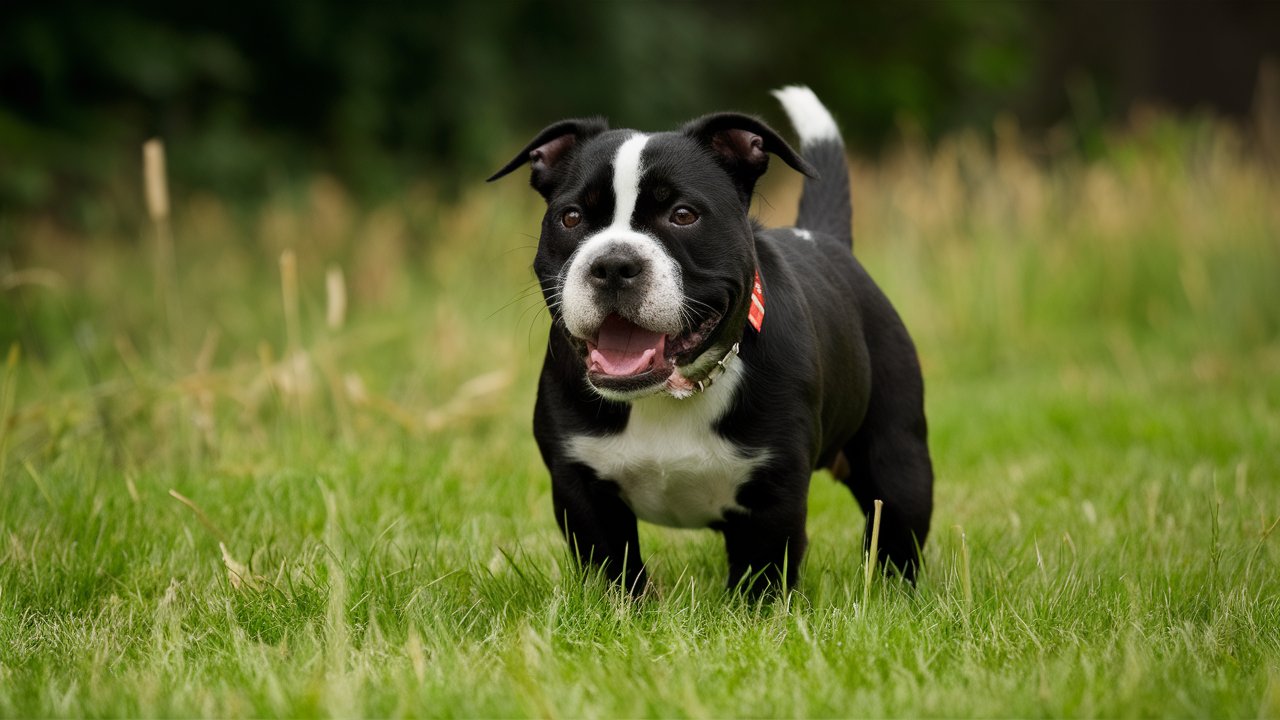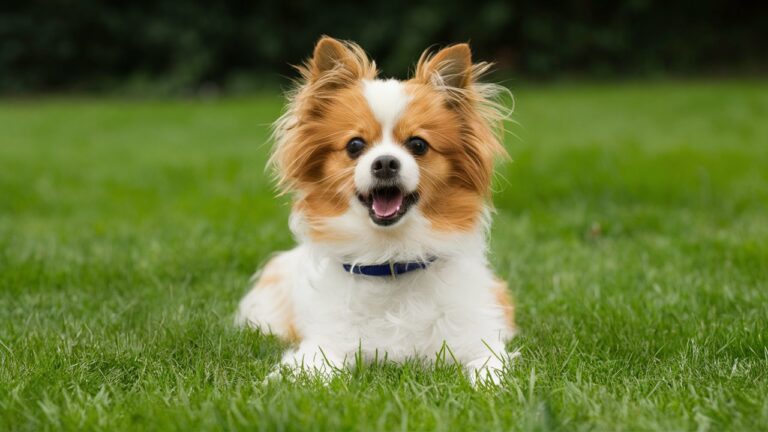The Lancashire Heeler: 100% Comprehensive Guide
The Lancashire Heeler, often referred to as the “smiling dog” due to its distinctive grin, is a small yet versatile breed hailing from the United Kingdom. Known for its intelligence, agility, and affectionate nature, this breed has a rich history and unique characteristics that make it a beloved companion for many. This comprehensive guide delves into the origins, physical characteristics, temperament, training, health, and care of the Lancashire Heeler, along with personal anecdotes to provide a well-rounded perspective.
Origins and History

A Glimpse into the Past
The Lancashire Heeler’s history dates back to the 17th century in the northwestern county of Lancashire, England. Originally bred as a working dog, the Heeler’s primary role was to herd cattle and control vermin. The breed is believed to be a cross between the Welsh Corgi and the Manchester Terrier, combining the best traits of both breeds.
Evolution Over Time
Over the centuries, the Lancashire Heeler has evolved from a working farm dog to a cherished household pet. Despite its small size, the Heeler’s herding instincts remain strong, making it a popular choice among farmers and pet owners alike. In 1981, the Lancashire Heeler gained recognition by the Kennel Club, further solidifying its status as a distinct breed.
Physical Characteristics
Size and Appearance
The Lancashire Heeler is a small, compact dog, typically standing between 10 to 12 inches (25 to 30 cm) at the shoulder and weighing around 6 to 13 pounds (3 to 6 kg). Despite its diminutive stature, the Heeler is muscular and well-proportioned, exuding an air of agility and strength.
Coat and Color
The breed boasts a short, dense coat that is weather-resistant, perfect for the often harsh climates of Lancashire. The coat colors are primarily black and tan, although liver and tan variants also exist. The Heeler’s expressive eyes and alert ears contribute to its endearing and distinctive appearance.
Unique Features
One of the most notable features of the Lancashire Heeler is its characteristic smile, a trait that endears it to many. This breed also has a natural bobtail or a tail that is typically carried high, reflecting its alert and energetic nature.
Temperament and Personality
A Loyal Companion
The Lancashire Heeler is known for its loyalty and affectionate nature. It forms strong bonds with its family and is often described as a “velcro dog” due to its tendency to stick close to its owners. This breed thrives on human companionship and is known to be especially good with children.
Intelligent and Trainable
Highly intelligent and eager to please, the Lancashire Heeler excels in training. Its quick learning ability and keen senses make it adept at various activities, including obedience, agility, and herding trials. However, its intelligence also means that it can become bored easily, necessitating regular mental stimulation.
Energetic and Playful
Despite its small size, the Lancashire Heeler is full of energy. It enjoys playtime and exercise, making it a great companion for active individuals or families. Regular walks, play sessions, and opportunities to engage in activities that challenge its mind and body are essential for this breed’s well-being.
Personal Anecdote: A Day with a Lancashire Heeler
I remember the first day I brought home my Lancashire Heeler, Max. From the moment he set foot in the house, his boundless energy and curiosity were evident. Despite his small size, Max quickly became the heart of our home. His favorite game was herding my children around the yard, a testament to his strong herding instincts. Watching Max navigate obstacles with ease during our agility training sessions never ceased to amaze me. His intelligence and enthusiasm made every training session a joy. Max’s affectionate nature and ever-present smile brightened even the gloomiest of days, making him an indispensable part of our family.
Training and Socialization
Early Training
Starting training early is crucial for the Lancashire Heeler. Puppyhood is the ideal time to establish good behaviors and prevent the development of bad habits. Basic obedience commands such as sit, stay, come, and heel should be introduced early on.
Positive Reinforcement
The Lancashire Heeler responds exceptionally well to positive reinforcement techniques. Reward-based training, using treats, praise, and play, is highly effective. Harsh or punitive methods can lead to fear and anxiety, which may undermine the training process.
Socialization
Socialization is equally important. Exposing the Heeler to a variety of environments, people, and other animals from a young age helps develop a well-rounded and confident dog. Puppy classes, playdates, and visits to different locations can contribute to a well-socialized Heeler.
Agility and Herding
Given the breed’s agility and herding background, specialized training in these areas can be incredibly rewarding. Many Lancashire Heelers excel in agility competitions and herding trials, showcasing their natural abilities and providing an excellent outlet for their energy.
Health and Wellness

Common Health Issues
The Lancashire Heeler is generally a healthy breed, but like all breeds, it is prone to certain health issues. These may include:
- Primary Lens Luxation (PLL): An inherited eye condition that can lead to blindness if not treated.
- Collie Eye Anomaly (CEA): A congenital condition affecting the eyes, common in herding breeds.
- Patellar Luxation: A condition where the kneecap dislocates or moves out of its normal position.
Regular Check-Ups
Regular veterinary check-ups are essential to ensure the Heeler’s health and well-being. Vaccinations, dental care, and routine screenings for common health issues can help maintain a high quality of life.
Nutrition
A balanced diet is crucial for the Lancashire Heeler’s health. High-quality dog food, appropriate for the dog’s age, size, and activity level, should be provided. Monitoring the dog’s weight and adjusting the diet as needed can prevent obesity, which can exacerbate health problems.
Exercise and Mental Stimulation
Regular exercise is vital for this energetic breed. Daily walks, play sessions, and opportunities to engage in activities that challenge the mind, such as puzzle toys and interactive games, are essential. Without sufficient physical and mental stimulation, the Lancashire Heeler may become bored and develop behavioral issues.
Grooming and Care
Coat Maintenance
The Lancashire Heeler’s short coat is relatively low-maintenance. Regular brushing helps remove loose hair and keep the coat in good condition. During shedding seasons, more frequent brushing may be necessary.
Nail and Dental Care
Regular nail trimming is important to prevent overgrowth and discomfort. Additionally, dental care should not be overlooked. Brushing the dog’s teeth regularly and providing dental chews can help maintain oral health.
Bathing
Bathing the Lancashire Heeler should be done as needed. Over-bathing can strip the coat of its natural oils, so it’s important to use a gentle dog shampoo and avoid excessive bathing.
Living with a Lancashire Heeler
The Lancashire Heeler Community

Breed Clubs and Organizations
Lancashire Heeler Club
The Lancashire Heeler Club is the main organization dedicated to this breed in the United Kingdom. Established in 1978, the club plays a crucial role in promoting the breed and ensuring its preservation. The club organizes various events, including dog shows, social gatherings, and educational seminars. These events provide an excellent opportunity for Heeler owners to meet, share experiences, and celebrate their beloved pets.
American Lancashire Heeler Club
In the United States, the American Lancashire Heeler Club (ALHC) is the primary organization supporting the breed. The ALHC focuses on maintaining breed standards, promoting responsible breeding practices, and educating the public about the Lancashire Heeler. The club also hosts events such as agility trials, herding tests, and conformation shows, offering numerous ways for owners to engage with their Heelers and the broader community.
Online Communities and Social Media
Facebook Groups and Forums
Social media platforms like Facebook have become invaluable tools for connecting Lancashire Heeler enthusiasts worldwide. Numerous groups and forums are dedicated to discussing all things Heeler-related, from training tips and health advice to sharing adorable photos and stories. These online communities provide a supportive space for new and experienced owners alike, fostering a sense of camaraderie and shared passion for the breed.
Instagram and YouTube
Instagram and YouTube are also popular platforms for showcasing the Lancashire Heeler. Many owners create dedicated accounts for their Heelers, sharing daily adventures, training milestones, and the occasional mischief. These platforms not only celebrate the breed but also help raise awareness and attract potential new owners.
Rescue and Adoption
Lancashire Heeler Rescue
Lancashire Heeler Rescue organizations play a vital role in ensuring that Heelers in need find loving homes. These organizations work tirelessly to rescue, rehabilitate, and rehome Heelers who have been abandoned, surrendered, or found as strays. They also provide valuable resources and support for adopters, helping to ensure a smooth transition for both the dog and the new owner.
Personal Anecdote: Adopting Max
Max, our beloved Lancashire Heeler, came into our lives through a rescue organization. When we first met him, it was clear he had been through a lot, but his resilient spirit and loving nature shone through. The rescue organization provided us with extensive support, from initial introductions to ongoing training advice. Adopting Max was one of the best decisions we ever made, and the experience underscored the importance of rescue organizations in the Heeler community.
Events and Competitions
Dog Shows and Conformation Events
Dog shows and conformation events are popular activities within the Lancashire Heeler community. These events provide a platform for showcasing the breed’s physical attributes and adherence to breed standards. They also offer an opportunity for breeders and owners to connect, exchange knowledge, and celebrate the best examples of the breed.
Agility and Herding Trials
Given the breed’s agility and herding instincts, many Lancashire Heelers participate in agility and herding trials. These competitions highlight the Heeler’s intelligence, speed, and versatility. Participating in such events not only provides physical and mental stimulation for the dog but also strengthens the bond between owner and pet.
Community Meetups
Local meetups and social gatherings are another great way for Lancashire Heeler owners to connect. These events, often organized by breed clubs or informal groups, offer a relaxed setting for Heelers and their owners to socialize, share experiences, and enjoy each other’s company. From picnics in the park to group hikes, these gatherings foster a sense of community and belonging.
Educational Resources
Books and Publications
There is a wealth of literature available for those interested in learning more about the Lancashire Heeler. Books and publications covering the breed’s history, characteristics, training, and care provide valuable insights for both new and seasoned owners. Notable titles include “The Lancashire Heeler: A Complete Guide” by Anna K. Nicholas and “Understanding the Lancashire Heeler” by Amanda MacDougall.
Online Courses and Webinars
In addition to books, online courses and webinars offer a modern approach to learning about the Lancashire Heeler. These resources, often hosted by breed experts and veterinarians, cover topics ranging from puppy training and behavior to advanced herding techniques. They provide a flexible and accessible way for owners to expand their knowledge and skills.
Supporting the Community
Volunteering and Donations
Supporting the Lancashire Heeler community can take many forms, from volunteering with rescue organizations to making donations to breed clubs and research initiatives. These contributions help ensure the well-being and preservation of the breed, providing essential resources and support for Heelers in need.
Breeding and Preservation
Responsible breeding practices are crucial for maintaining the health and integrity of the Lancashire Heeler breed. Reputable breeders prioritize the well-being of their dogs, conducting health screenings and adhering to breed standards. By supporting responsible breeders, owners can contribute to the preservation and improvement of the breed.
Advocacy and Awareness
Advocating for the Lancashire Heeler and raising awareness about the breed’s unique qualities and needs is another important aspect of community involvement. By educating the public and promoting responsible ownership, advocates help ensure that Heelers find loving and suitable homes.
Conclusion
The Lancashire Heeler is a small dog with a big personality. Its intelligence, agility, and affectionate nature make it a delightful companion for individuals and families alike. With proper training, socialization, and care, this versatile breed can thrive in various environments and bring endless joy to its owners.
Whether you’re drawn to the Heeler’s distinctive smile, its rich history, or its energetic and loyal nature, this breed has much to offer. By understanding its unique characteristics and needs, you can ensure a fulfilling and rewarding relationship with your Lancashire Heeler.
Personal Reflection
Owning a Lancashire Heeler has been one of the most rewarding experiences of my life. Max’s playful antics, unwavering loyalty, and boundless energy have brought immense joy to our household. Through the ups and downs of training, health scares, and everyday adventures, Max has remained a constant source of happiness and companionship. For anyone considering adding a Lancashire Heeler to their family, I can confidently say that this breed is a true gem, capable of filling your life with laughter, love, and unforgettable memories.






